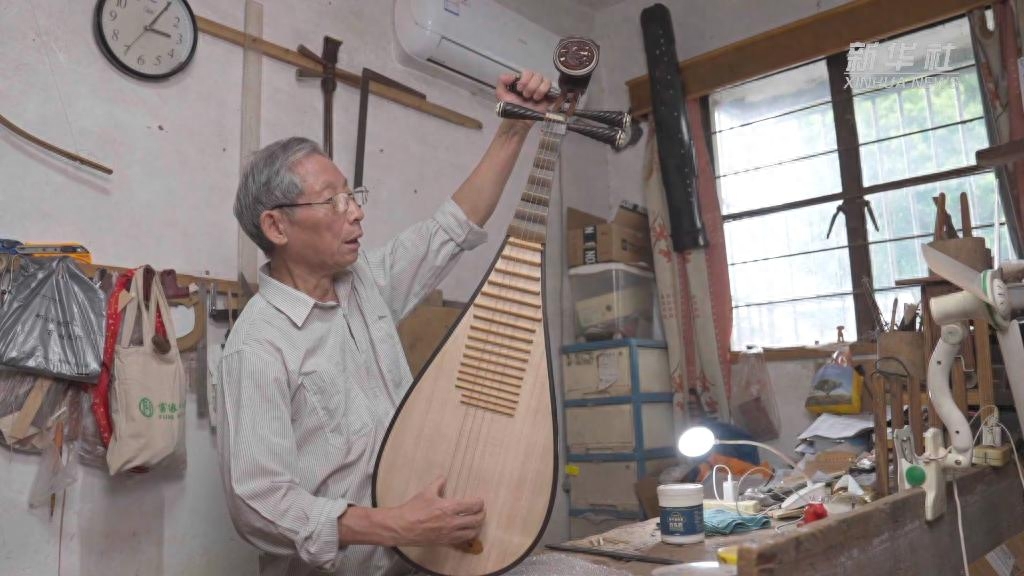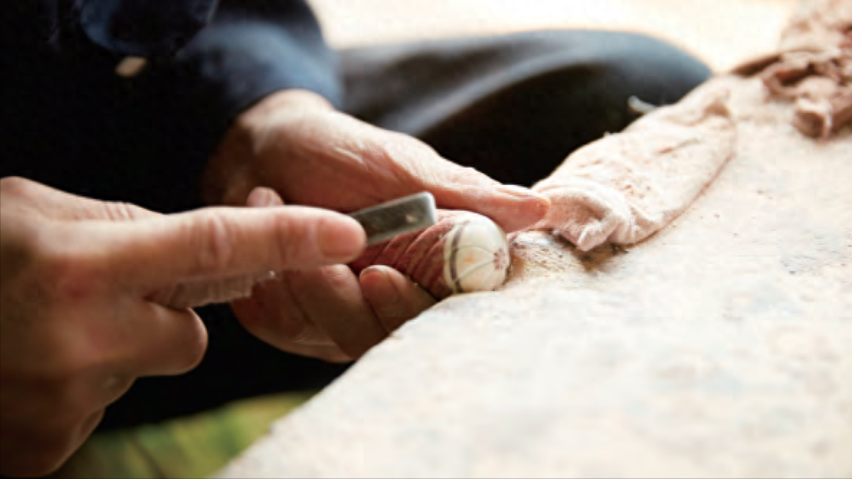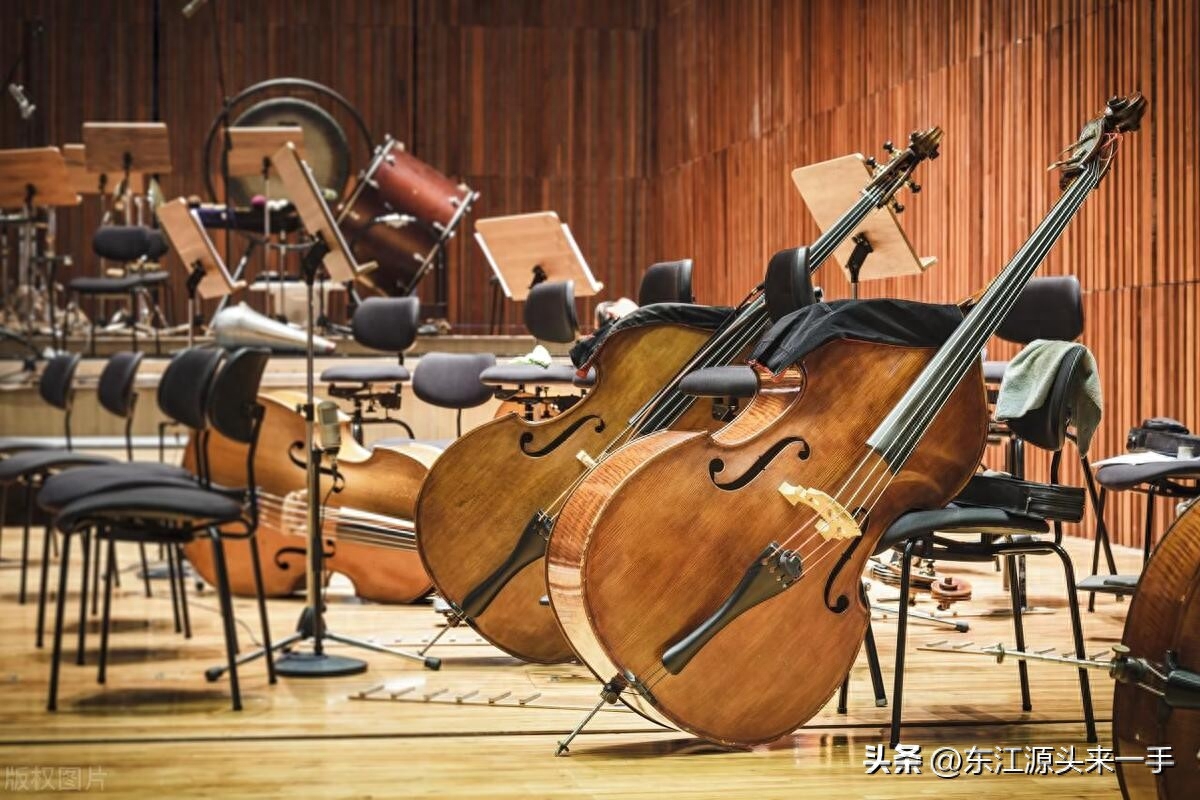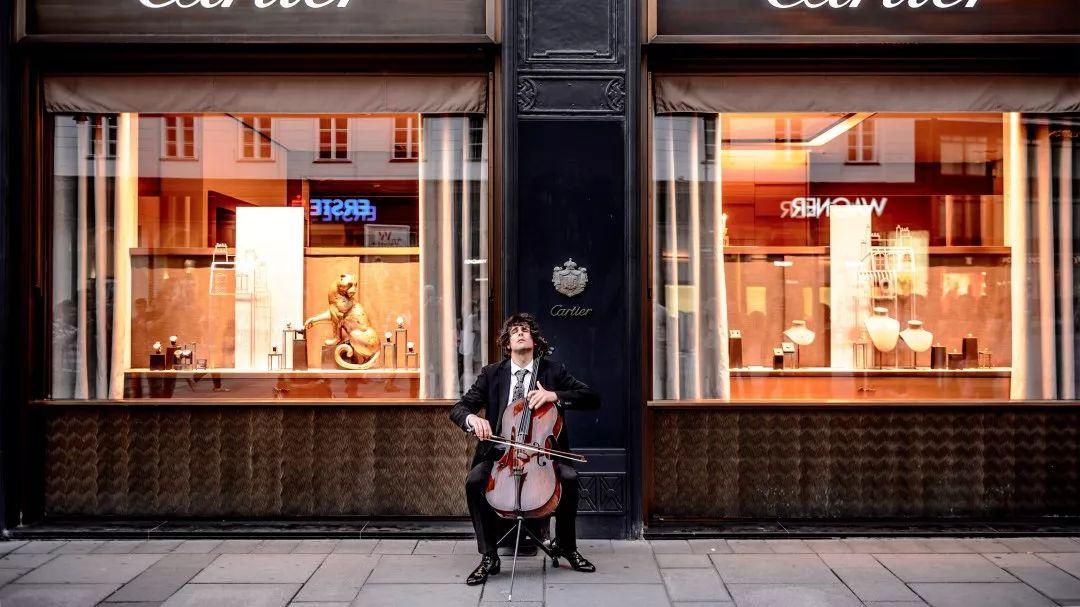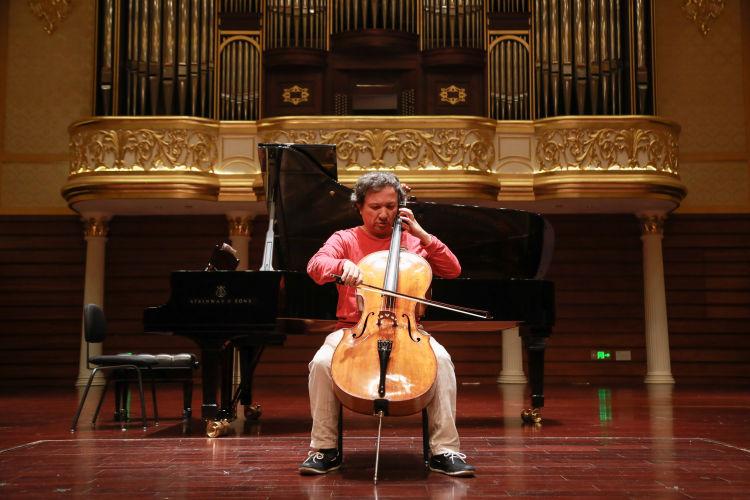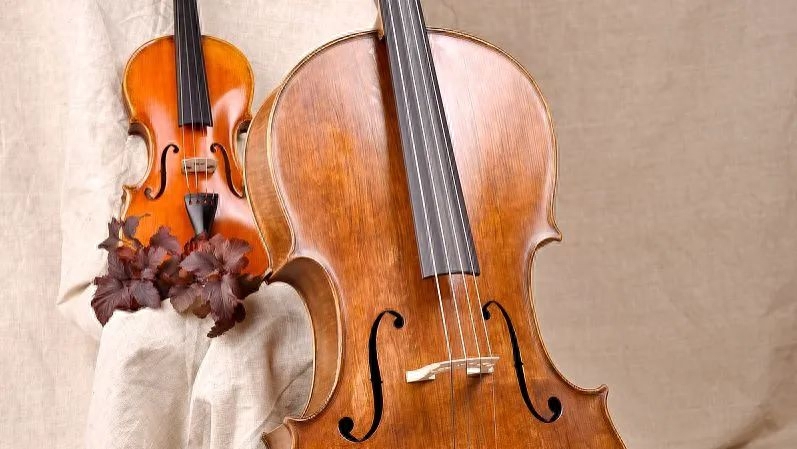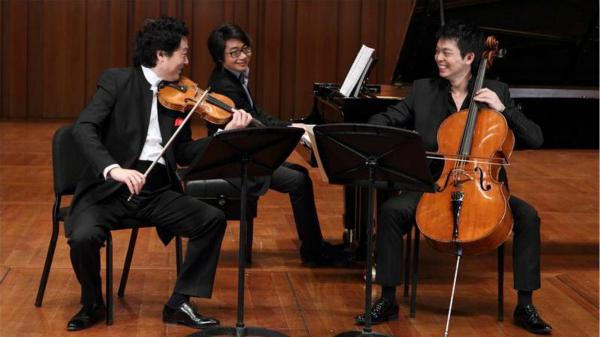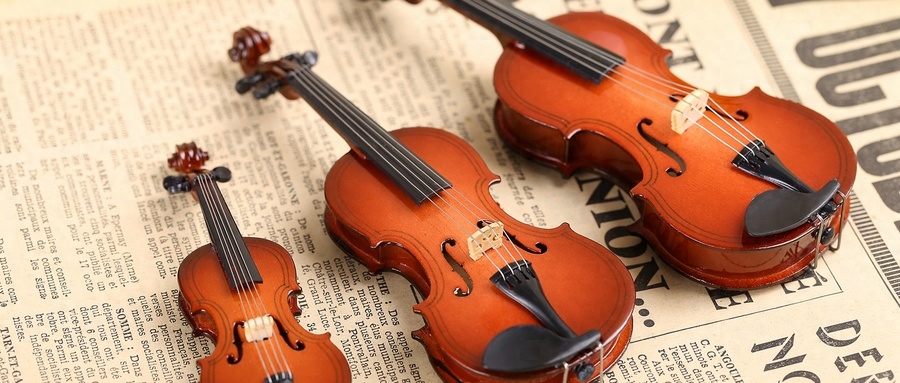品鉴·四把“价值连城”的大提琴(稀有资料)
·品鉴·
四把“价值连城”的大提琴
(稀有资料)
Andrea Amati,Cremona
安德烈·阿玛迪,克里蒙纳
Giovanni Tononi,Bologna
乔万尼·托诺尼,博洛尼亚
Giovanni Grancino,Milano
乔万尼·格兰西诺,米兰
Giovanni Battista Guadagnini,Piacenza
乔万尼·巴蒂斯塔·瓜达尼尼,皮亚琴察

以下资料来源于Rudolf Hopfner博士编撰的
《Masterpieces of Violin-Making》
该书主要收录奥地利国家银行珍藏的弦乐器
译文:方义嘉·博士
···图片欣赏&文本资料···
Andrea Amati,Cremona
安德烈·阿玛迪,克里蒙纳
估价约~5000,000 RMB · 五百万人民币

(面板)⬆️
(背板)⬆️

(正面琴头)⬆️

(侧面琴头)⬆️

(F孔)⬆️
译文:
对于安德烈·阿玛迪(Andrea Amati)乐器的风格评估变得越来越困难,主要因为以下两种原因:首先保存下来的乐器数量很少,尤其是大提琴经过了大幅度的修改。在阿玛迪的那个时代,提琴家族的中低音乐器标准尺寸比今天通常要大得多。因此,在某些情况下为了适应十八与十九世纪的音乐会演出,这些乐器的琴身已经被进行了“校正”。
这是具有高度拱形的琴型,具有今天通常的75厘米琴身标准长度。背板明显比面板更拱。四片木板增加了宽大的琴翼。木料的纹理非常规则,年轮适中。板胚切开的后背显示出微弱的纹理。侧板的纹理更加强烈,但部分纹理已经被油漆盖上。乐器因为陡峭而垂直的F孔获得典型的外观,顶部的F孔比底部的F孔宽大。由于轮廓已被更改,因此拱形很罕见。特别是在琴上端与下端边缘,拱起的位置从镶线立即开始而不出现凹槽。后来弦轴槽与琴头旋钮加入了Andrea Amati 的风格,一层金黄色的底漆上是一层厚厚的红棕色清漆,并带有明显的裂纹。弦轴槽与琴头旋钮也有些许不同。整个琴体都是一致的油漆。
考虑到它的年龄,大提琴的整体状况都很好。背板中间三分之一处已打上补丁。在下部区域增加了一些补丁用于加大强度。琴的面板显示出数次修理。边缘已经被更换,并修饰的很好。该乐器是由前德意志民主共和国的一位大提琴独奏家在Ore Mountains (Erzgebrige)购买的。他首先从一位伦敦专家那里得知,这把琴的制琴师是Andrea Amati。
原文
The stylistic assessment of instruments by Andrea Amati is made more difficult by two circumstances: the small number of instruments that have been preserved and the fact that the violoncellos, in particular, have been subjected to drastic modification. At he time the Amati dynasty was founded, the standard dimensions of the bass instruments in the violin family were much larger than is usual today. Thus the bodies of many instruments were "corrected"in some cases already in the 18t and 19t centuries in order to make them suitable for concert performance.
This is a highly arched model with today's usual standard length of 75 cm. The back is clearly more highly arched than the belly. Wide wings have been added to the four-piece belly. The grain of the wood is very regular with moderately wide annual rings. The slab-cut, divided back exhibits weak flaming. The ribs are more strongly flamed, but the flaming in part has been painted on. The instrument receives its typical appearance from the steeply vertical F holes, which have larger holes at the top than at the bottom. Because the contour has been changed, the arching is unusual. Particularly at the upper and lower end, the arching begins without fluting immediately after the purfling. The pegbox and scroll were added in the style of Andrea Amati at a later date. Over a golden-yellow ground coat lies a thick, reddish-brown colour varnish with distinct craquelure. The varnish on the pegbox and scroll is somewhat different. The entire instrument has been over-varnished.
Given its age, the overall condition of the violoncello is good. The middle third of the back has been strengthened with a patch. In the area of the lower bout there is a partial reinforcement of parchment (?). The belly shows several repairs. The edges have been replaced and very well retouched. The instrument was purchased in the Ore Mountains (Erzgebirge) by a solo cellist from the former German Democratic Republic. He first learned from a London expert that the violoncello can be attributed to Andrea Amatil.
···图片欣赏&文本资料···
Giovanni Tononi,Bologna
乔万尼·托诺尼,博洛尼亚
估价约~2,000,000 RMB · 两百万人民币
···

(面板)⬆️

(背板)⬆️

(正面琴头)⬆️

(背面琴头)⬆️

(左侧琴头)⬆️

(右侧琴头)⬆️
译文:
乔瓦尼·托诺尼 1681年
印刷标签:“loannes Tononus fecit. Bononiae / in Platea Pauaglionis. Anno 1681".
在Tononi的大提琴印刷标签上的地点是他在帕瓦格里昂广场的工作室的位置。时至今日,在博洛尼亚(Bologna)市中心仍能发现这个广场和帕瓦格里奥内门廊。这是一种非常有趣的乐器,出自意大利博洛尼亚派大师之手;然而,大提琴的轮廓被改变了。和这一时期的其他一些大提琴一样,在背板上端约6厘米处有一个销钉孔。可能那里曾经有一个钩子,用来把带子固定在乐器上,以便在游行时携带它。
面板由五部分组成。在高音的一侧,纹路有些不规则,也有一些小的木结。背面是由两片没有纹理的枫木组装而成的。在背板的上三分之一处有一个木结。侧板的木结构与背面的材料相对应,弦轴槽和琴头旋钮是由没有纹路的枫木制成。由于面板长度的缩短造成琴腹部的拱起,尤其是上腹部的拱起,一直到达镶线。F孔是非常倾斜和不对称的;这表明了阿玛提的影响。引人注目的琴头旋钮显示了托诺尼的创造力;它看起来很坚固,很有雕塑感。托诺尼没能抹去他的工具印记,所以涡旋的切割方向仍然清晰可见。精致的倒角没有因磨损而损坏。在一层发光的金黄色底漆上,有一层相当均匀的红褐色漆,琴头背部部分已经磨损。琴体都被整体打磨了。
考虑到这把乐器的高龄,整体状况还是不错的。所有的损坏都得到了很好的修复。背面的上端有几处裂缝。面板的裂缝造成的损害更大;在一些地方,人们用与年轮宽度相适应的小木片对它们进行了修复。音柱裂缝已经用补丁固定好了。琴码的支撑位置也已经下沉了。面板的边缘沿着整个都被替换了。在希尔Hill公司的证书中,1948年,这把大提琴所有者是伦敦的马乔里·伊德斯小姐。1967年,该乐器在哈根的阿道夫·沃斯博士手中。
原文
Giovanni Tononi, Bologna 1681
Printed label: "loannes Tononus fecit. Bononiae / in Platea Pauaglionis. Anno 1681".
The reference on the printed label of Tononi's violoncello is to the location of his workshop on Piazza Pavaglione. This square and Portico del Pavaglione are still found today at the heart of the city of Bologna. This is a very interesting instrument by the Bolognese master; the contour of the violoncello however, has been altered. As is the case with some of the other violoncellos from this period, there is a dowel hole in the back, about 6 cm below the button. Possibly there was once a hook there, in order to fasten a strap to the instrument for carrying it in processions.
The belly is assembled from five pieces. On the treble side the grain is somewhat irregular, and there are also some small knots. The back was assembled from two pieces of unflamed maple. There is a knot in the upper third on the bass side. The wood structure of the ribs corresponds with the material of the back The pegbox and scroll are made of unflamed maple. Because of the reduction in length, the arching of the belly, particularly in the area of the upper bout, begins immediately after the purfling. The F-holes are very slanted and somewhat asymmetrical; the cut shows the influence of Amati. The striking scroll displays Tononi's creative powers; it seems strong and very sculptural. Tononi failed to smooth away his tool-marks, so that the direction of the cut of the volutes is still clearly visible. The delicate chamfer has not been damaged through wear. Over a luminescent, golden-yellow ground coat lies a fairly uniform, reddish-brown colour varnish, which has partially worn away on the back. The instrument is highly overpolished.
···图片欣赏&文本资料···
Giovanni Grancino,Milano
乔万尼·格兰西诺,米兰
估价约~4,000,000 RMB · 四百万人民币
···

(面板)⬆️

(背板)⬆️

(正面琴头)⬆️

(背面琴头)⬆️

(左侧琴头)⬆️

(右侧琴头)⬆️
译文:
Giovanni Grancino,米兰1706,“ex Piatti-Dunlop”
印刷标签:“Giovanni Grancino in Contrada /Largha di Milano al segno I della Corona 1706”(06手写)
从1670年左右到1726年以后,Grancino家族的作坊位于米兰的Contrada Larga。这把大提琴的名字“al segno della Corona”可以翻译为“王冠的标志”。在制作这把大提琴的时候,有两名Grancinos(都以Giovanni为基督教名)在工作室工作。在这个时候,他的父亲几乎70岁了,因此似乎把这一时期的大部分工作归功于他的儿子(* 1673)。Grancino的大提琴因其音质而大受欢迎。不知什么时候,1706年的乐器轮廓被缩小了。大约在1890年,希尔Hill公司将它扩大到75厘米的标准尺寸。
在琴的上圆,面板有一个附加的琴翼。年轮相距很远。在被取代的琴翼上,年轮的纹理被杰出的修图显著地模仿了。这两部分,板切背面是没有纹路的枫木。在琴的区域是另一个非常精细维修的例子。这把乐器高度拱起,背板远比面板拱起。F孔的剪裁非常优雅。它们有精致、完美的圆孔,让人想起阿玛蒂。引人注目的是狭窄的琴头旋钮,这是一个熟练和快速的手雕刻。从工具标记上仍然可以清楚地看出切割的方向。在一层浅色的底漆上覆盖着一层深棕色的、有细微裂纹的彩色清漆。
除了尺寸修改外,整体情况还是好的。背板有好几个地方被做了双层处理。由于尺寸修改,一些边角和侧板不是原装的。
1900年,希尔Hill公司把阿尔弗雷多·皮亚蒂演奏的大提琴卖给了波尔多的阿勒曼先生。1931年,它通过巴黎经销商阿尔伯特•爱抚萨(Albert爱抚萨)转给了斯凯勒•邓洛普小姐,她与同名Dunlop轮胎公司的所有者有亲戚关系。
原文:
Giovanni Grancino, Milan 1706, “ex Piatti-Dunlop” Printed label: "Giovanni Grancino in Contrada /Largha di Milano al segno I della Corona 1706"(06 handwritten).
From around 1670 until after 1726, the workshop of the Grancino family was on Contrada Larga in Milan. The name of the house "al segno della Corona" may be translated as "at the sign of the crown" At the time that the present violoncello was made, two Grancinos -both with the Christian name Giovanni - were working in the workshop. At this time the father was almost 70 years old, and it thus seems appropriate to attribute most of the work at this period to his son (* 1673). Grancino's violoncellos are much in demand because of their tonal qualities. At some unknown date, the contour of the instrument of 1706 was reduced. In around 1890, it was enlarged by the Hill firm to the standard dimension of 75 cm.
On the treble side the two-part belly has an added wing. The annual rings are very far apart. On the replaced edge the grain of the annual rings has been remarkably imitated by outstanding retouching. The two-part, slab-cut back is made of unflamed maple. In the area of the edges is another example of remarkably fine retouching. The instrument is highly arched, the back far more so than the belly. The cut of the F-holes is very elegant. They have delicate, perfectly round holes that are reminiscent of Amati. Conspicuous is the narrow scroll, which was carved with a skilled and quick hand. The direction of cut is still clearly discernible from the tool-marks. Over a light ground coat lies a dark-brown, finely crackled colour varnish.
Apart from the modifications, the overall condition is good. The back has been doubled in several places. Because of modification, some parts of the ribs and the edge are not original.
The violoncello was played by Alfredo Piatti and sold by the Hill firm in 1900 to a Mr. Alleman of Bordeaux. Through the Paris dealer Albert Caressa, it passed in 1931 to Miss Schuyler Dunlop, who was related to the owner of the eponymous tyre company.
···图片欣赏&文本资料···
Giovanni Battista Guadagnini,Piacenza
乔万尼·巴蒂斯塔·瓜达尼尼,皮亚琴察
估价约~18,000,000 RMB · 一千八百万人民币
···

(面板)⬆️

(背板)⬆️

(正面琴头)⬆️

(背面琴头)⬆️

(左侧琴头)⬆️

(右侧琴头)⬆️
译文:
乔瓦尼·巴蒂斯塔·瓜达尼尼,皮亚琴察
第174 “ex von Zweygberg”
印刷标签:“Joannes Baptista filius Laurentji Guadagnini fecit Placentie 174。”(最后一个数字是手写的,难以辨认,可能是“3”)。用盖章和“GBGP”覆盖。
这是Guadagnini在他刚过30岁第一个创作时期在皮亚琴察制作的大提琴,它是一个相对高度拱形的琴型,证明了他在工艺和清漆方面的极大掌控力。
两部分的面板是细纹理的木材;年轮的宽度向外增加。在面板离下方10厘米的地方有一个木结。两片背部显示微弱的,水平的纹路。侧板有不同的特点,有强烈的和不平均的纹路。弦轴槽和琴头旋钮是用没有纹路的枫木做的。琴体拱形非常饱满,在狭窄的凹槽之后立即开始。背板比面板圆得多。
直立的F孔是巧妙地切割,有非常大的圆孔。值得注意的是F孔有着非常尖锐的边缘。规则的镶边是干净的。可以看到工具标记,也可以看到前面的穿孔的标记。一个宽的,规则的倒角完成琴头旋钮。清漆与黄色底漆,这是清楚可见的,特别是在背面。在它上面有一层发光的红色清漆。清漆的结构在背板特别明显;面板和侧板被过度打磨。
这个乐器保存得很好,但在琴边缘和侧板上有明显的使用痕迹。背板在上圆的高音侧有两条长裂缝,在下圆的区域有一条裂缝。面板有低音梁的裂缝和音柱的裂缝。侧板上的许多裂缝已用夹板固定;侧板大部分是双层的。面板的边缘部分也是叠层的。
第一个已知的所有者是芬兰大提琴家伦纳特·冯·茨维格伯格。1963年,这把琴卖给了纽约的洛林·伯恩森先生,之后他因为健康原因又转让了这把琴。
原文
Giovanni Battista Guadagnini, Piacenza 174., “ex von Zweygberg”
Printed label: "Joannes Baptista filius Laurentji Guadagnini fecit Placentie 174." (the last figure is handwritten and illegible, possibly "3"). Seal with cross and "GBGP".
Guadagnini made this violoncello at the age of just over 30 during his first creative period in Piacenza It is a relatively highly arched model and attests to great mastery in its craftsmanship and varnish.
The two-part belly is of finely-grained wood; the width of the annual rings increases towards the outside. In the belly there is a knot about 10 cm above the lower block. The slab-cut, divided back displays weak, horizontal flaming. The ribs have a different character, with intense, restless flaming. The pegbox and scroll are made of unflamed maple. The arching is very full and begins immediately after the narrow fluting. The back is far more arched than the belly.
The upright F-holes are skilfully cut and have very large holes. Remarkable are the very sharp edges of the F-holes. The regular purfling is cleanly executed The volutes of the symmetrical scroll are deep. Toolmarks are visible as are marks in the form of punctures on the front side of the eye. A wide, regular chamfer completes the scroll. The varnish begins with a yellow ground coat, which is clearly visible, especially on the back. Over it lies a luminescent, red colour varnish. The structure of the varnish is especially visible on the back; the belly and ribs are highly overpolished.
The instrument is well preserved, but displays heavy signs of use on the edges and ribs. The back has two long cracks on the treble side in the upper bout and a crack in the area of the lower bout. The belly has a bass-bar crack and a soundpost crack. Numerous cracks in the ribs have been secured with cleats; the ribs are partially doubled. The edge of the belly is partially doubled.
The first known owner was the Finnish cellist Lennart von Zweygberg. In 1963 the instrument was sold to Mr. Lorin Bernsohn of New York, who parted with the instrument for health reasons.
···作者·Rudolf Hopfner·简介···

(图片来源于网络)
鲁道夫·霍普夫纳(Rudolf Hopfner)
1954年出生于奥地利州南部的Neunkirchen,七岁时就接受了他的第一堂小提琴课程。从1972年到1977年,他在维也纳的音乐学院完成了数个不同的学习课程,后来在维也纳大学学习了音乐学和历史学(1989年获得哲学博士学位)。同年,他被任命为维也纳新城约瑟夫·马蒂亚斯·豪尔音乐学院音乐教育系主任。 1992年,他成为艺术史博物馆的历史乐器收藏馆馆长,并自2000年以来一直担任该收藏的馆长。霍普夫纳博士在维也纳大学任教,讲授有关器官学的各种主题,组织展览,编辑小提琴音乐,并撰写了许多专业论文,词典文章和书籍。
原文
Rudolf Hopfner was born in Neunkirchen, Lower Austria, in 1954 and received his first violin lessons at the age of seven. From 1972 to 1977 he completed several different courses of study at the Hochschule für Musik und darstellende Kunst in Vienna and later studied musicology and history at the University of Vienna (Dr. phil. degree in 1989). In the same year he was appointed director of the Department of Music Education at the Joseph Matthias Hauer Conservatory in Wiener Neustadt. In 1992 he became curator of the Collection of Historic Musical Instruments at the Kunsthistorisches Museum and has been director of the collection since 2000. Dr. Hopfner has taught at the University of Vienna, lectured on various topics related to organology, organized exhibitions, edited violin music, and authored numerous specialist essays, dictionary articles and books.
旅美旅加青年大提琴家
方义嘉·博士·简介

广东汕头人,5岁开始跟随父亲方健雄学习大提琴,其父亲是汕头爱乐交响乐团大提琴首席。方博士早年除跟随父亲学习外,还跟随上海音乐学院大提琴教授李继武与广东民族乐团大提琴首席翁庆昇学习。2008年,以优异成绩考入广州星海音乐学院管弦系跟随沈一郡教授学习。在获得本科学位后以特殊录取形式进入世界顶尖音乐学院之一的美国辛辛那提大学音乐学院跟随William Grubb博士学习攻读大提琴研究生(Master of Music) 与博士(Doctor of Musical Arts)。在校期间,获得由该学院颁发的“艺术家文凭(Artist Diploma)”。方博士现任加拿大英属哥伦比亚大学音乐学院室内乐助教,并跟随加拿大著名大提琴家,Emerson弦乐四重奏创始人Eric Wilson教授研习室内乐。
方博士多次与国内外传统民族音乐大师进行跨界合作,其中包括与中国琵琶大师汤良兴、中国笙大师翁振发在美国纽约卡内基音乐厅同台演出。在新音乐方面,方博士于2017/2018/2019年举办了多次“中国大提琴新作品音乐会”,该项目共邀请到近50位来自中国十四所专业音乐院校与多名海外著名华裔作曲家为其献作。此举获得了中外音乐界的大力关注,随后他便创办了“中国大提琴新作品网”,致力于传播中国大提琴新音乐。
2020年,方博士所在的AOTA现代音乐六重奏新音乐专辑由美国Ablaze唱片公司与ASCAP美国作曲家协会联合出版,该专辑由格莱美奖最佳古典录音师Adam Abeshouse倾力制作。
方博士现使用由辛辛那提城市交响乐团Robinson女士赠予的1870年英国大提琴,美国提琴制作大师David Gusset 1986年Rugguri琴型大提琴,法国 Joseph Arthur Vigneron 大提琴弓与英国James Tubbs大提琴弓。
版权声明:本文摘自方义嘉的大提琴世界,作者方义嘉,部分所载内容来源于各大网络平台,仅供参考、交流、学习等非商业目的。转载的稿件版权归原作者和机构所有,如有侵权,请联系我们删除,谢谢合作!
[注:本文部分图片来自互联网!未经授权,不得转载!每天跟着我们读更多的书]
互推传媒文章转载自第三方或本站原创生产,如需转载,请联系版权方授权,如有内容如侵犯了你的权益,请联系我们进行删除!
如若转载,请注明出处:http://www.hfwlcm.com/info/292299.html

